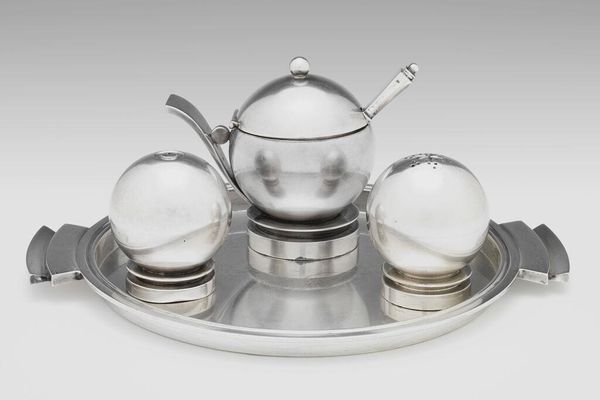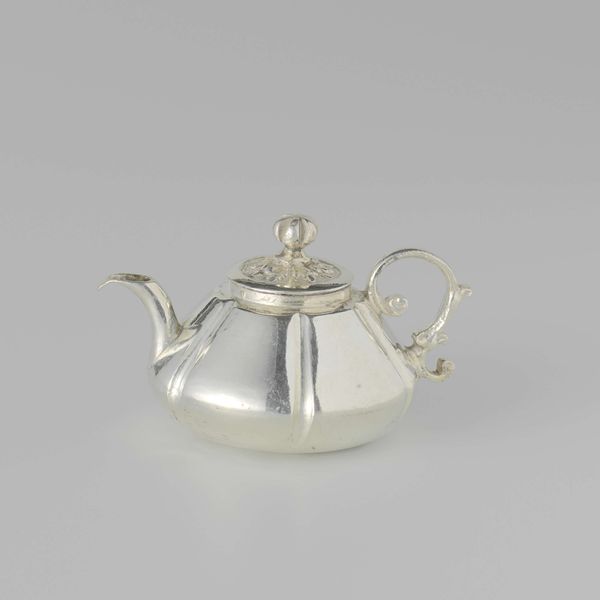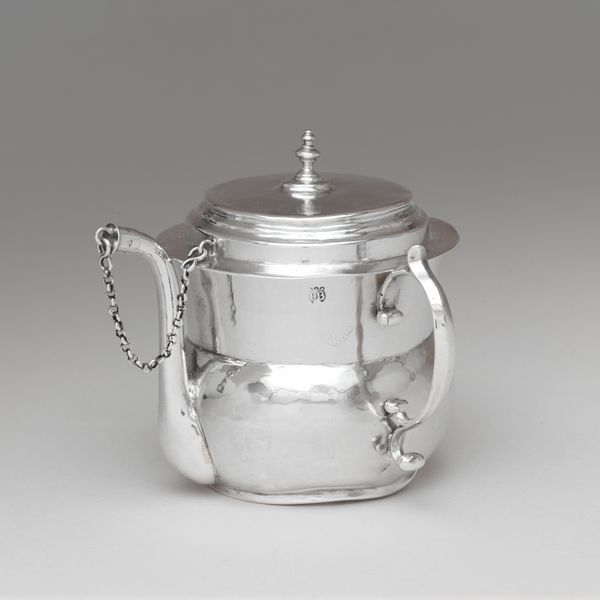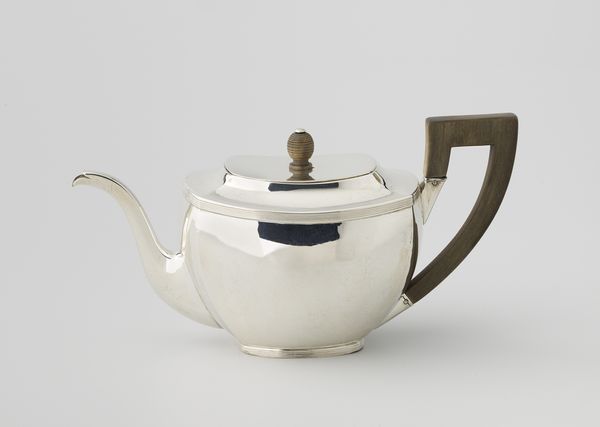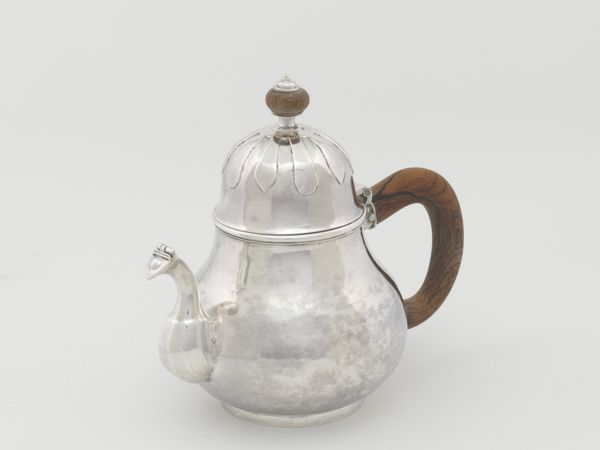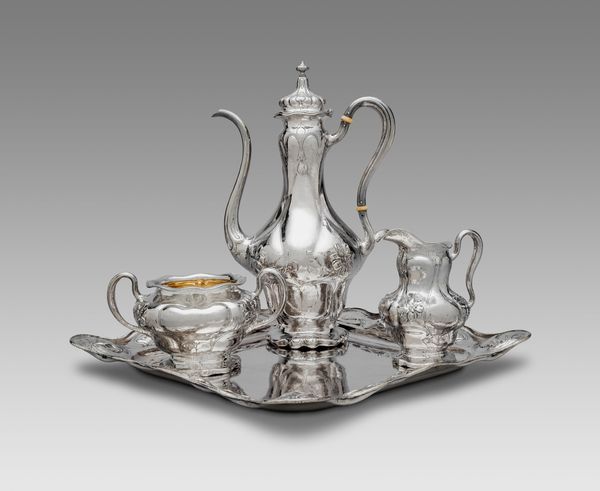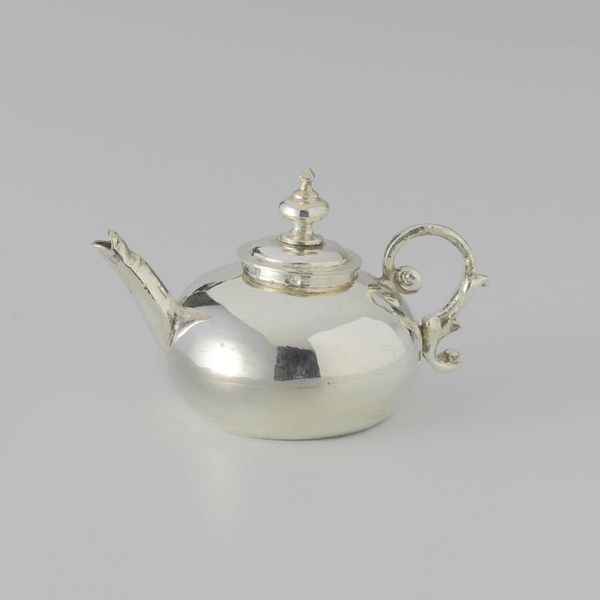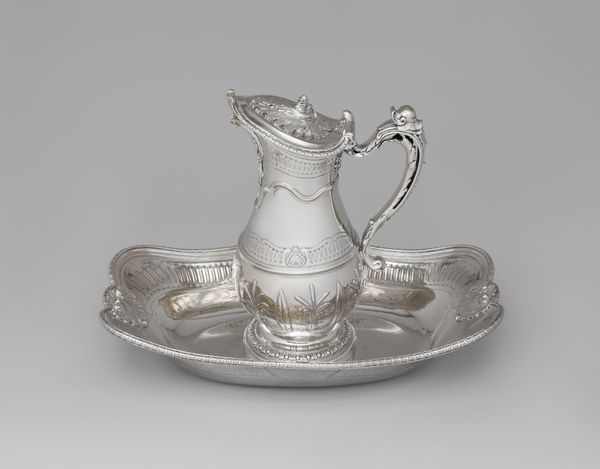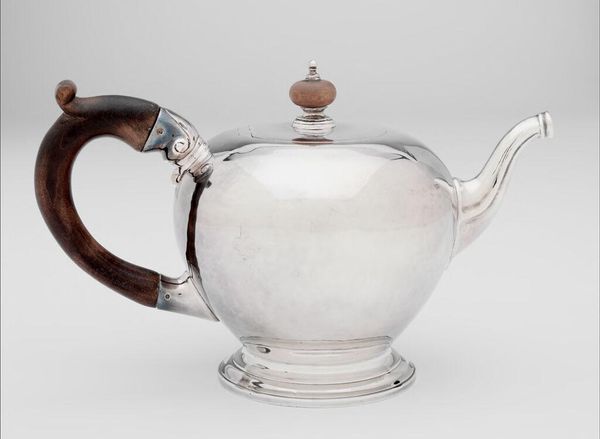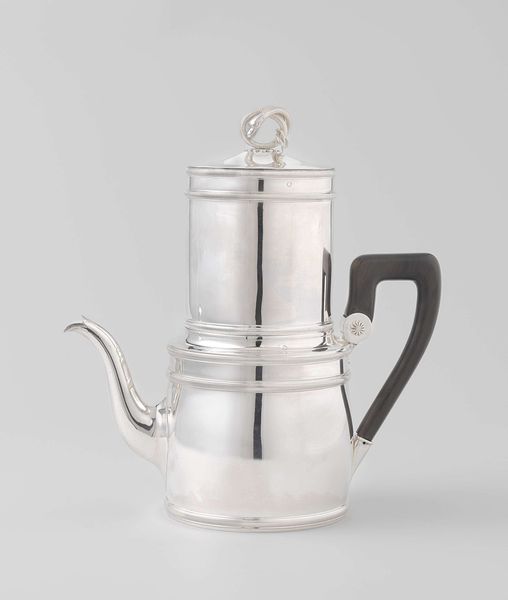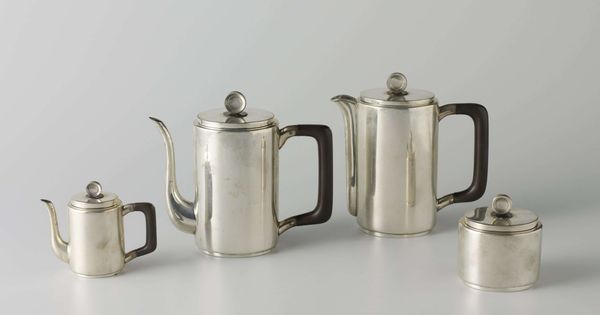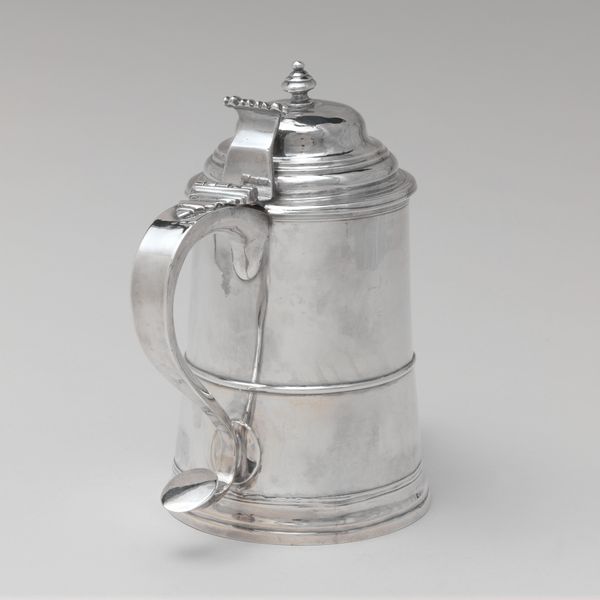
Theeservies bestaande uit een warmwaterkan, theepot, suikerpot, melkkan en presenteerblad c. 1905
0:00
0:00
metal, ceramic
#
art-nouveau
#
metal
#
ceramic
#
ceramic
Copyright: Rijks Museum: Open Domain
Curator: Just look at the shimmer on this Art Nouveau tea service! The surface practically sings with a pearlescent rainbow. Editor: It certainly does. This complete set, dating from around 1905, includes a hot water pot, teapot, sugar bowl, milk jug, and even a serving tray, all crafted by Orivit. Curator: The way the light catches those stylized, almost skeletal flower designs…it gives off a slightly melancholy feeling. Like beauty holding its breath. Does it evoke the same mood for you? Editor: Melancholy, perhaps, because of its reflection of a culture enjoying the fruits of labor from colonies in Africa. Objects like this affirmed social hierarchies that benefited the consumer but caused great exploitation. Curator: Right, I see your point, the beautiful designs do cloak some murky social stuff beneath. Still, you can't deny how evocative this Orivit service is; those attenuated forms rising from each vessel, as though pushing up out of liquid silver. Editor: They're definitely reaching for something, an escape from industrialization? Mass production met elite tastes. I'm curious how it ended up in our collection, too. Where would such a piece been originally displayed? A privileged salon, perhaps? Curator: Imagine pouring a perfect cup on a grey, drizzly day, the fire crackling... but you’re right, a set like this definitely whispers stories of high society and formal afternoons, reflecting a world far removed from those toiling behind the scenes. Editor: Exactly, a silver echo of social imbalance, and a reflection that continues through display practices of museums and even now in how our institutions seek to remedy this by re-evaluating their public programming. Curator: Even within these delicate forms, these objects really carry a heavy social weight, don't they? Editor: Absolutely. Beauty always has its price, and understanding that cost deepens our engagement with it.
Comments
No comments
Be the first to comment and join the conversation on the ultimate creative platform.
